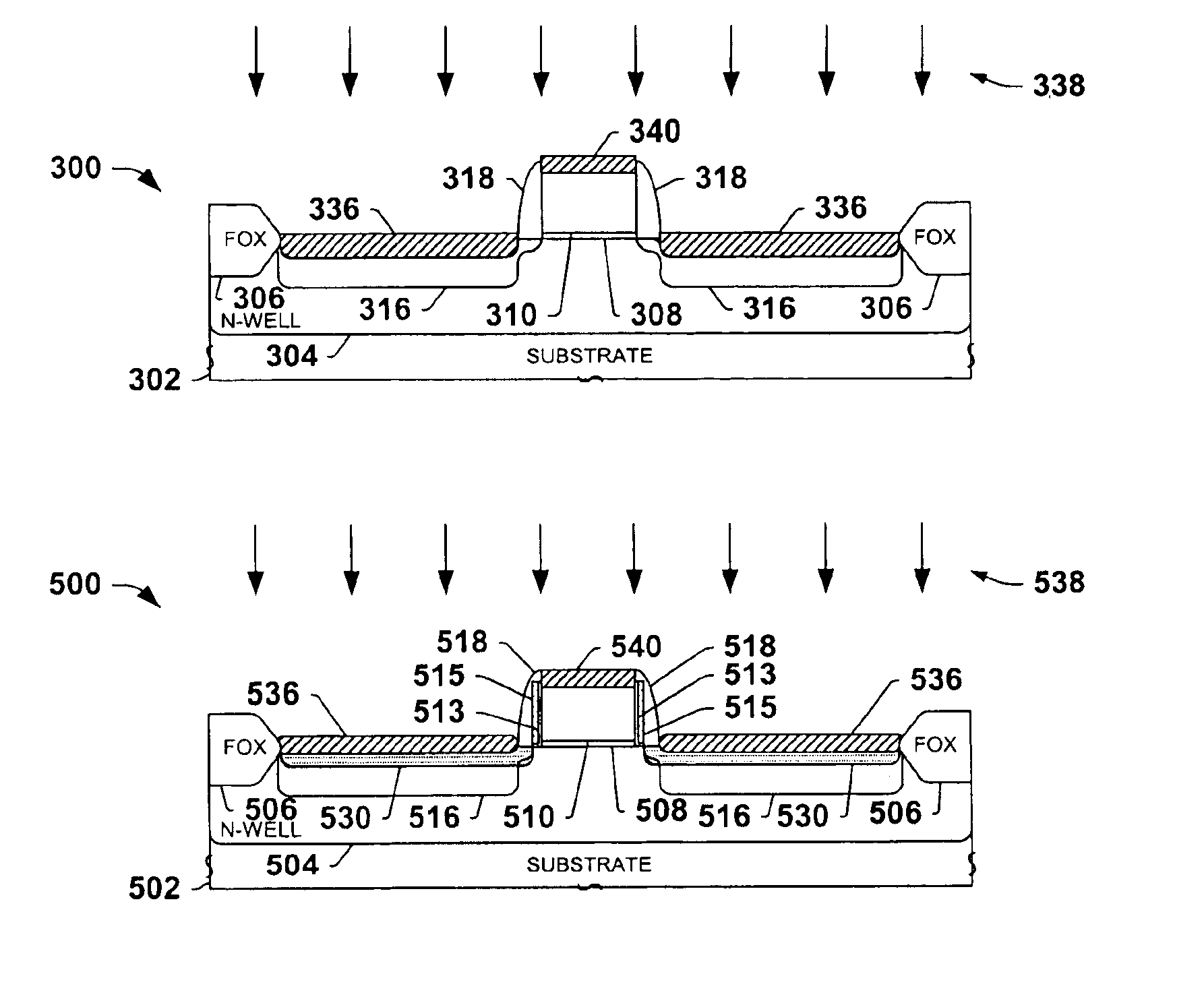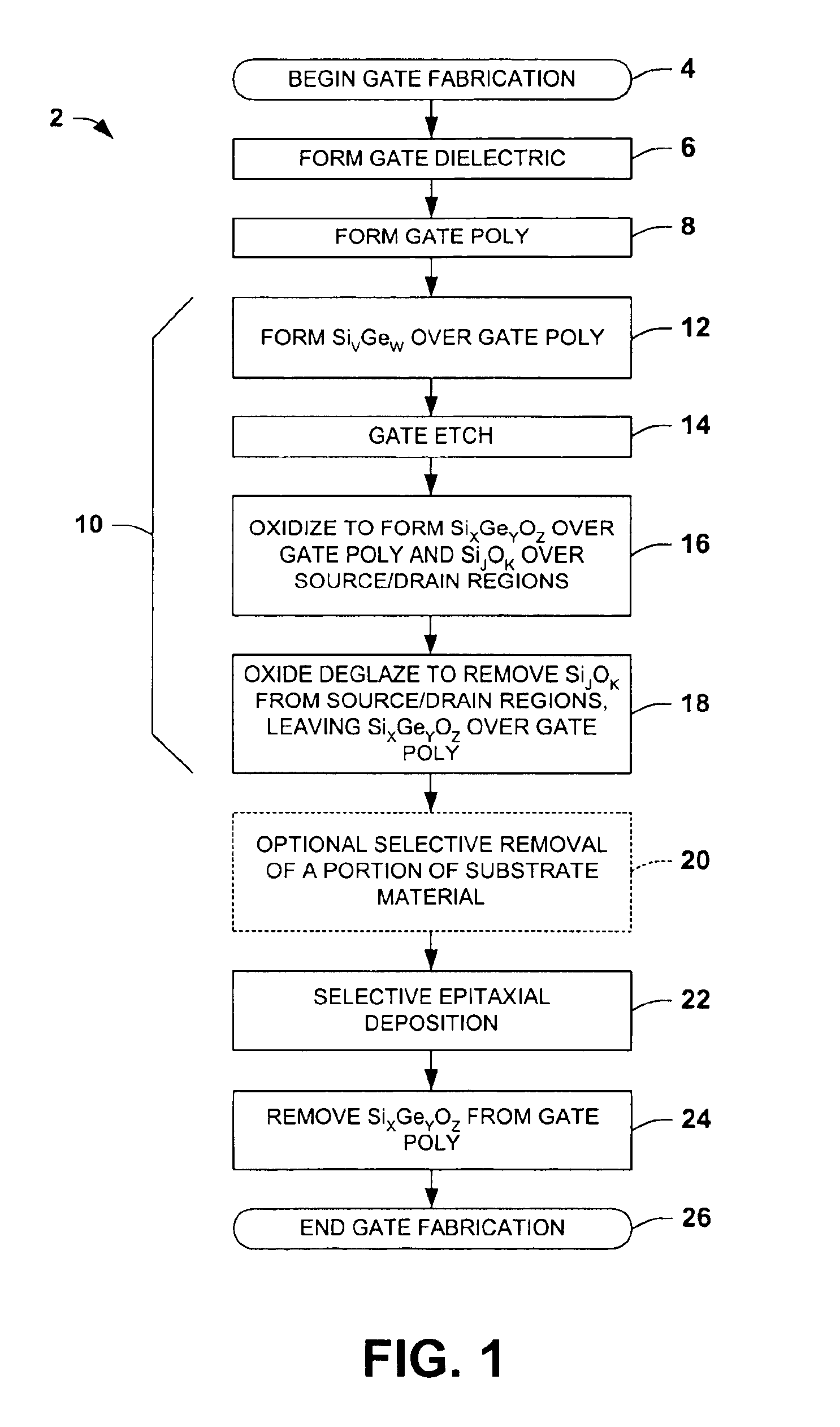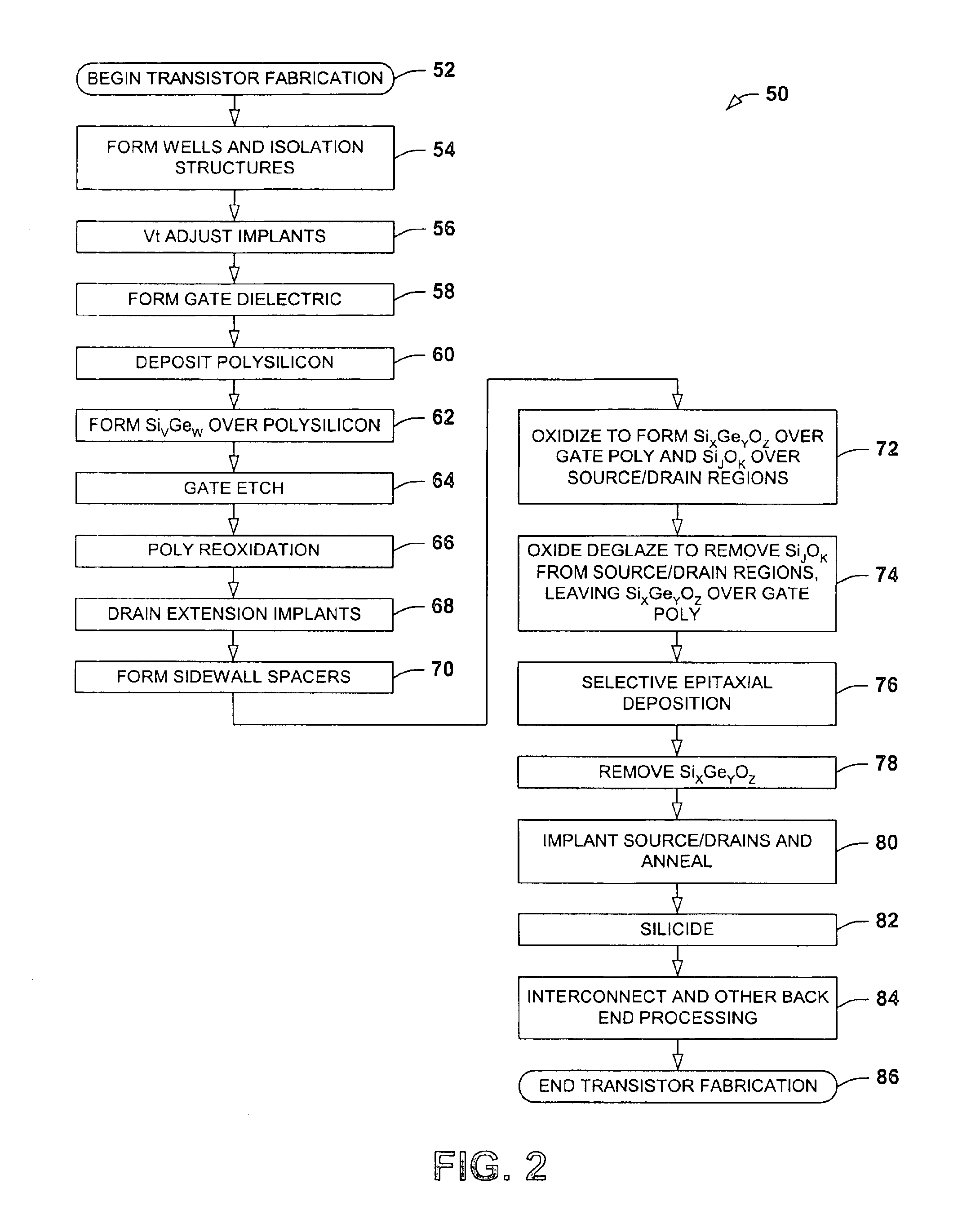Method for preventing polysilicon mushrooming during selective epitaxial processing
a polysilicon and epitaxial processing technology, applied in the field of semiconductor devices, can solve the problems of reducing the channel length of the transistor, degrading performance, scaling the mos transistor, and affecting the performance of the transistor,
- Summary
- Abstract
- Description
- Claims
- Application Information
AI Technical Summary
Benefits of technology
Problems solved by technology
Method used
Image
Examples
Embodiment Construction
One or more implementations of the present invention will now be described with reference to the attached drawings, wherein like reference numerals are used to refer to like elements throughout. The invention relates to semiconductor devices formed using selective epitaxial deposition or growth processes, wherein poly mushrooming is prevented or inhibited by providing a protection layer above a patterned gate structure during the selective deposition. The invention is illustrated and described below in conjunction with exemplary PMOS transistors in which deposited silicon is used in forming elevated or raised source / drains or to fill in recesses in recessed source / drain or recessed HDD transistors. However, the invention may be employed, alternatively or in combination, in fabricating NMOS transistors, wherein the invention is not limited to the illustrated examples, and wherein the illustrated structures are not necessarily drawn to scale.
Referring initially to FIG. 1, an exemplary...
PUM
 Login to View More
Login to View More Abstract
Description
Claims
Application Information
 Login to View More
Login to View More - R&D
- Intellectual Property
- Life Sciences
- Materials
- Tech Scout
- Unparalleled Data Quality
- Higher Quality Content
- 60% Fewer Hallucinations
Browse by: Latest US Patents, China's latest patents, Technical Efficacy Thesaurus, Application Domain, Technology Topic, Popular Technical Reports.
© 2025 PatSnap. All rights reserved.Legal|Privacy policy|Modern Slavery Act Transparency Statement|Sitemap|About US| Contact US: help@patsnap.com



